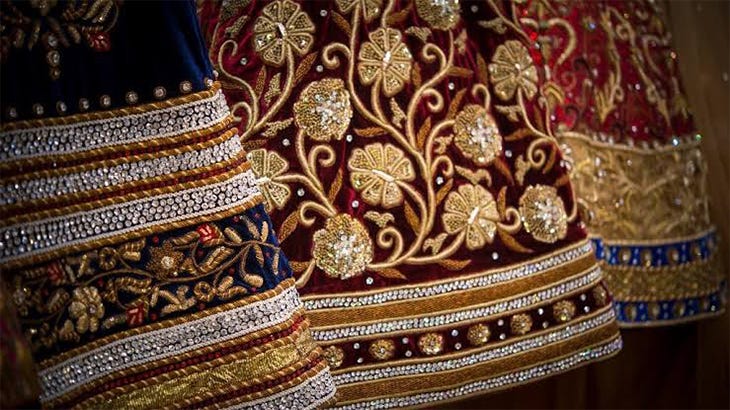Zari, or zari work as it is commonly known, is an intricate art of weaving fine threads made of silver or gold. These threads are then woven into fabrics like silk to create elaborate and beautiful embroidery patterns, called zardozi. Traditionally used in clothes from Southasian countries including India, Pakistan, and Bangladesh, as well as Persia and Iran, zari is most prominently used as a decorative element in garments like sarees, ghagras, lehengas, cholis, kurtas, and dhotis, and is seen to add monetary value because of the threads.

As a form of gold and silver embroidery, evidence of zari can be found and traced back to the time of the Rig Veda, between 1500–1200 BC, where it was believed to signify grandeur and allude to the regal attires of gods and kings. However, it was during the 17th century, under the patronage of the Mughal emperor Akbar, that the craft prospered, and reached its popularity. This is often attributed to the fact that Surat, as a port city, was linked to the route of the Meccan pilgrimage, because of which zari was re-introduced to the Indian subcontinent.
The zari threads are essentially brocades of tinsel threads meant for weaving. Manufactured by winding or wrapping flattened metallic strips made from pure gold, silver, or slit metalized polyester film, they are wound around the base yarn, made of silk, and further flattened for electroplating. Electroplating plates them with gold, and the gilded thread, once brightened, is wound on a reel. Depending on what they are made of, three types of zari- namely real zari, imitation zari, and metallic zari- can be distinguished.
Real zari refers to the zari made from real silver and golden threads or electroplated threads. Imitation zari, on the other hand, is made from copper wires drawn from copper alloys, and is generally more economical. Metallic zari is most commonly used today, and is the modernized version of traditional zari that replaces gold, silver, and copper metals. It is considered to be the most durable, resistant, and light-weight.
Since Independence, zari work has witnessed a resurgence in growth and popularity. Encouraged by Indian governments as an indigenous Indian craft produced traditionally by women, it is produced in different parts of the country differently. Located on the west coast, Surat is considered to be the largest producer of all types of zari work in the world, including threads, cantile, ribbons, borders, trims, fringes, cordonettes, cords, and edges. It is also considered a local specialty in Lucknow, Bhopal, Hyderabad, Delhi, Agra, Kashmir, Mumbai, Ajmer, and Chennai. The difference in the production style of each of these places is often noticeable through the metallic threads, and the stitches used to keep them in place.
